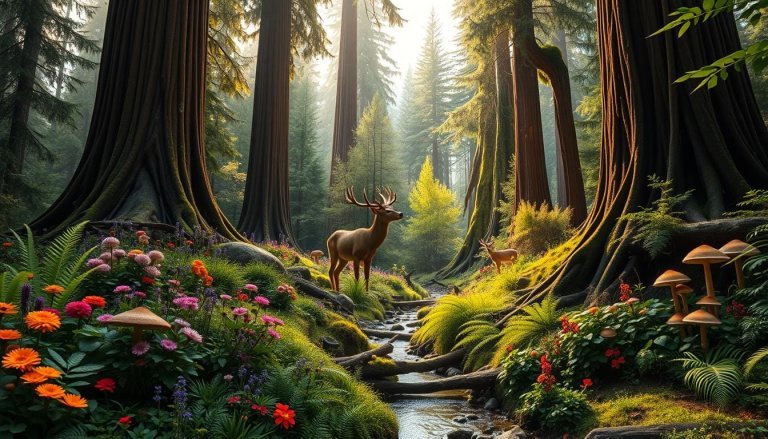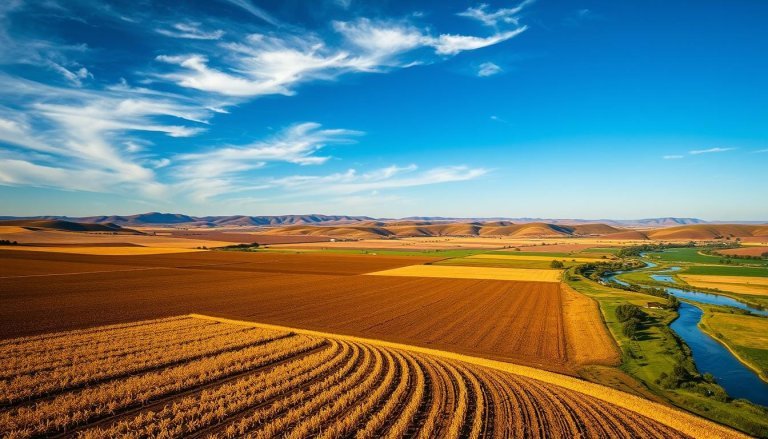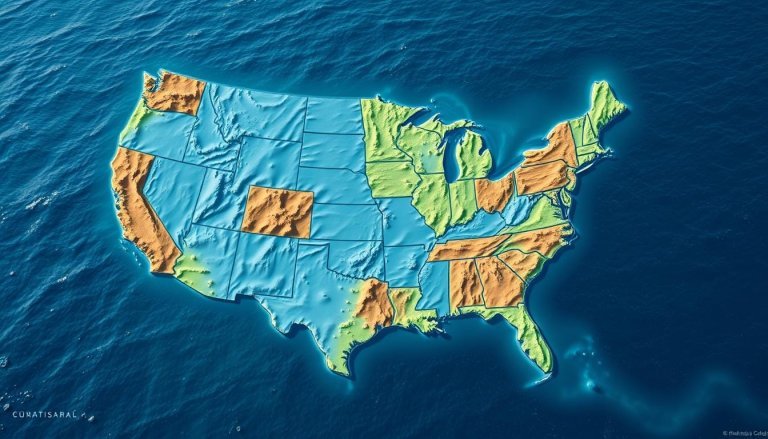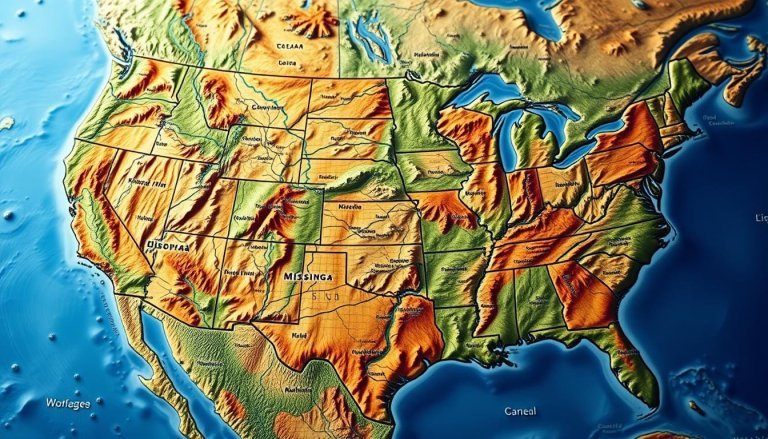USA forests are truly amazing, covering over a third of the country. They range from California’s tall sequoias to Alaska’s vast Tongass. These woodlands are full of life and beauty.
The national forest system covers 193 million acres. It has both conservation areas and places for many uses. This balance helps these forests stay healthy for us and future generations.
Forest management in the USA is all about balance. The U.S. Forest Service looks after 154 national forests and 20 national grasslands. They make sure these places are good for wildlife and for people to enjoy.
USA forests are home to incredible diversity. For example, the Coconino National Forest in Arizona has red rocks and alpine tundra. The Chippewa National Forest in Minnesota has over 1,300 lakes and 400,000 acres of wetlands. Each forest has its own special story.
National parks and forests are key in fighting climate change. They soak up a lot of carbon dioxide. Companies like Every Man Jack are working with the National Forest Foundation to plant trees and restore forests. This shows their dedication to caring for our forests.
Overview of USA’s National Forest System

The USA’s national forest system is a huge network of protected lands across the country. It’s key for protecting and managing forests, covering 192 million acres. The USDA Forest Service looks after these lands, trying to balance conservation and resource use.
Scale and Distribution
The system includes 155 national forests, 20 national grasslands, and 222 research forests. These lands are 8.5% of the US, as big as Texas. Most of these lands are in the West, with Alaska having 12%.
Historical Development
Forest protection in the USA has a long history. It started in 1891 with the Land Revision Act, letting presidents create forest reserves. By 1905, the USFS managed 60 forest units over 56 million acres. By 1910, there were 150 national forests over 172 million acres.
Important milestones include:
- 1924: The first wilderness area was set up in the Gila National Forest.
- 1939: Fire suppression crews were organized.
- 1950: The Smokey Bear fire prevention campaign began.
Management and Purpose
The USDA Forest Service manages these lands for many uses. These include conservation, timber, grazing, and more. The system has 1,200 sites on the National Register of Historic Places, with 23 National Historic Landmarks.
Forest management is a balance between conservation and using resources. This leads to debates and changes in policies.
USA Forests: A Climate Change Powerhouse
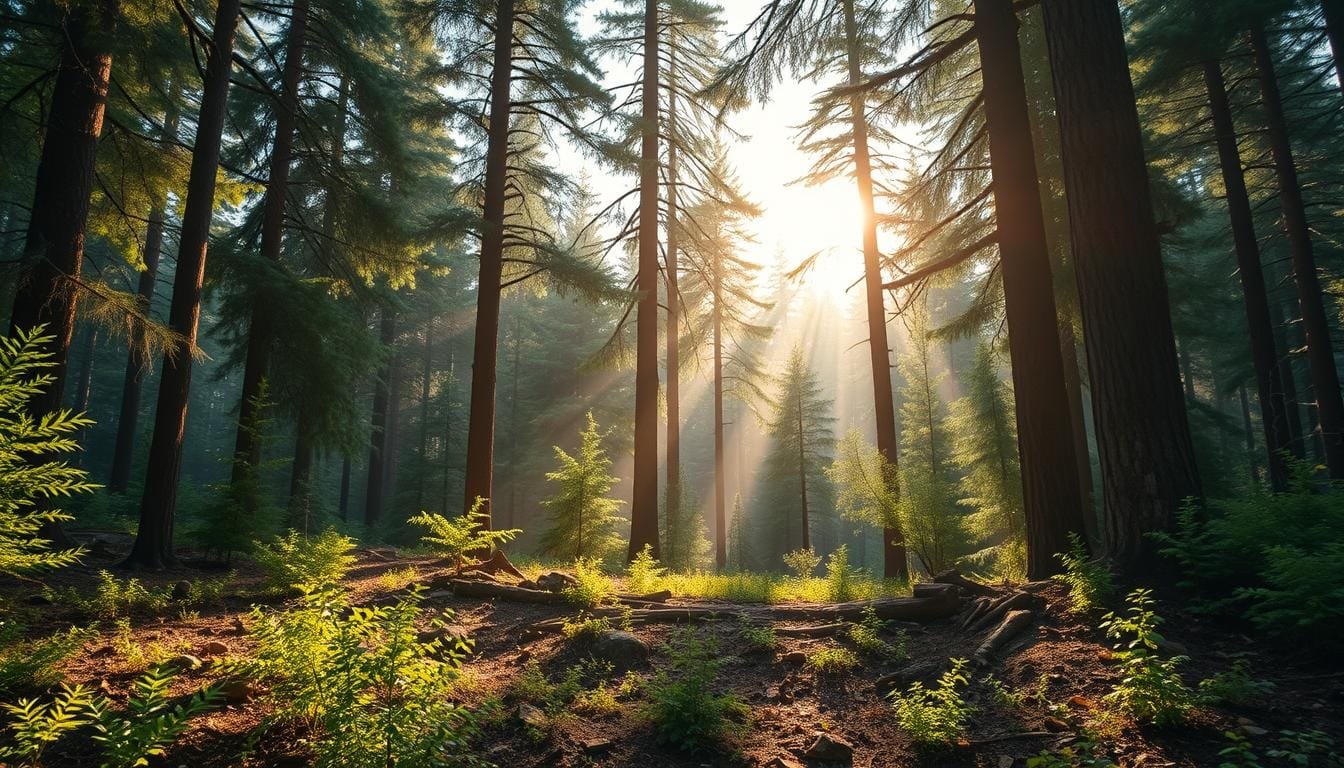
USA forests are key in fighting climate change. They soak up carbon dioxide, helping to keep our climate stable. Let’s see how they help our planet stay healthy.
Carbon Sequestration Capabilities
American forests are great at pulling carbon out of the air. One big tree can take in as much carbon as a car does in 1,500 miles. This makes them important in cutting down greenhouse gases.
Role in Global Climate Regulation
USA forests play a big part in keeping our climate stable. They take in lots of CO2, helping to keep temperatures from rising too high. The Biden-Harris Administration knows this and is working to save these forests.
Forest Soil Carbon Storage
Forest soil is a secret hero in the fight against climate change. It holds 58% of the carbon in forests, more than trees and wood products. Saving this soil is crucial for forest health.
| Forest Component | Carbon Storage Percentage |
|---|---|
| Soil | 58% |
| Trees and Forest Products | 42% |
USA forests are true climate change heroes. They pull carbon out of the air, help regulate the climate, and store carbon in their soil. They are vital in our fight against climate change.
Biodiversity and Ecosystem Services
USA’s forests are key biodiversity hotspots. They offer vital ecosystem services for wildlife and humans. These forests protect diverse wildlife habitats and manage water resources.
Wildlife Habitat Protection
Forests are homes for many species. But climate change is a threat. It’s making species move and change their habits.
This changes how ecosystems work. Some animals are doing well in these new places. But many primates, butterflies, and big predators are not.
Water Resource Management
Forests are crucial for clean water. They filter and store water naturally. In fact, 55% of America’s drinking water comes from forests.
When forest cover goes up by 10%, water treatment costs drop by 20%. This shows how important forests are for water.
Natural Resource Conservation
The Forest Service balances timber harvesting with protecting ecosystems. This helps conserve natural resources. Urban forests cover 20% of U.S. forests.
They improve community health by cleaning the air. Each year, they prevent 670,000 cases of breathing problems.
Recent studies show forest diversity affects productivity. More tree species mean higher productivity. Forests help offset carbon emissions, balancing up to 30% of human-caused carbon over decades.
Protecting forest biodiversity is key for both wildlife and human well-being.
Old-Growth Forest Conservation Efforts
The USA’s old-growth forests are full of life and help control the climate. In 2022, the Forest Service found they manage about 32 million acres of old growth. They also care for 80 million acres of mature forests, making up 18% of all forested land.
The Biden-Harris Administration is working hard to protect these forests. They proposed a national plan to save old-growth forests from climate change. This plan, called the National Old Growth Amendment (NOGA), aims to keep old-growth forests safe and promote good forest management.
The Tongass National Forest in Alaska is a great example of conservation. It’s the world’s largest intact temperate rainforest and a key carbon sink. The administration restored roadless protections to 9.37 million acres, keeping it untouched.
These efforts do more than just save forests. They help with carbon sequestration, keep ecosystems healthy, and support local economies. Over 60 million people get water from Forest Service lands, showing how vital these efforts are.
